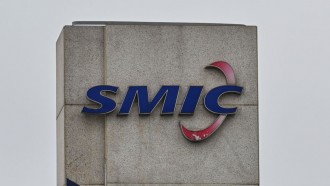California-based startup, Figure has achieved a tremendous feat by securing a substantial $70 million in its initial round of external funding.
Reuters reports that this successful endeavor, led by Parkway Venture Capital, will propel the development of Figure's versatile humanoid robots.
According to the same report, the primary focus of this investment will be to expedite the manufacturing and production processes as Figure prepares to unveil its first autonomous humanoid in the coming months.
While the exact valuation of the one-year-old company remains undisclosed, insiders estimate it to surpass an impressive $400 million.
Among the roster of investors participating in this funding round, founder and CEO Brett Adcock made a personal investment of $20 million, showcasing his unwavering belief in the company's potential.
Other notable contributors include Aliya Capital and Bold Ventures, underscoring the widespread confidence in Figure's groundbreaking endeavors.
What is Figure?
Figure's humanoid robots are purposefully designed to excel in various environments and carry out various tasks, from warehouse operations to retail settings.
Figure claims that it will help fill 10 million vacant jobs in the United States, particularly in warehouses, transportation, and retail.
The company asserts its ultimate objective is to deploy autonomous humanoid employees to support global business operations.
With an eye toward commercialization, Figure has already entered into discussions with retailers to explore potential collaborations for their innovative robots.
The Humanoid Robot Market
Setting itself apart from industry giants like Boston Dynamics and Amazon Robotics, Figure's CEO Adcock emphasizes the development of robots capable of tackling general-purpose tasks.
Additionally, the ultimate objective is to imbue Figure's robots with the ability to learn and interact with their surroundings, granting them even greater flexibility and adaptability.
"Our firm belief is that general-purpose humanoid robots hold far greater potential than their single-purpose counterparts," Adcock asserts.
"By integrating these robots into the workforce, we can effectively address labor shortages and eventually eliminate the need for hazardous or undesirable jobs."
Commercially Viable Humanoid Robots
The quest for commercially viable humanoid robots has ignited a competitive race, attracting both established tech giants and ambitious startups.
Tesla, under the leadership of CEO Elon Musk, unveiled a prototype of its humanoid robot, affectionately named 'Optimus,' last year.
Musk expressed confidence that Tesla would be capable of accepting orders for the robot within the next three to five years, with an expected price tag of under $20,000. He also recently forecasted that demand for robots could reach 20 billion units.
The burgeoning interest in humanoid robots stems from their potential to revolutionize industries by automating tasks traditionally reliant on human intervention.
From manufacturing to customer service, these versatile robots have the power to significantly enhance productivity, efficiency, and safety across many sectors.
Moreover, deploying humanoid robots solves labor shortages, particularly in physically demanding or repetitive jobs. By replacing humans in these roles, companies can reduce the risk of work-related injuries while streamlining operations and optimizing resource allocation.
Stay posted here at Tech Times.
Related Article: Mojo Vision Announces $22.4 Million in Funding for 300mm Blue GaN-on-Silicon MicroLED Array Wafer Activation





